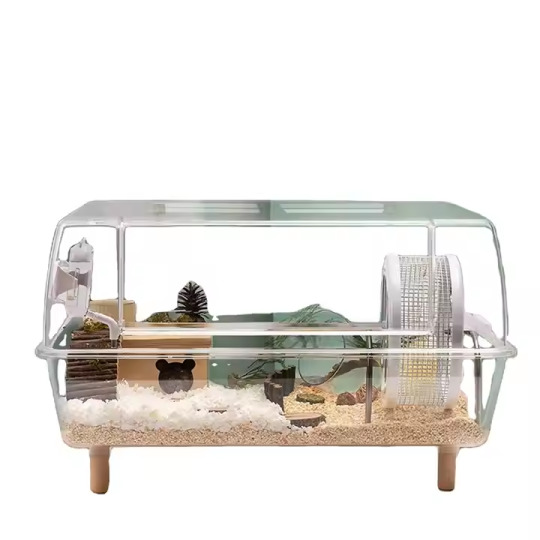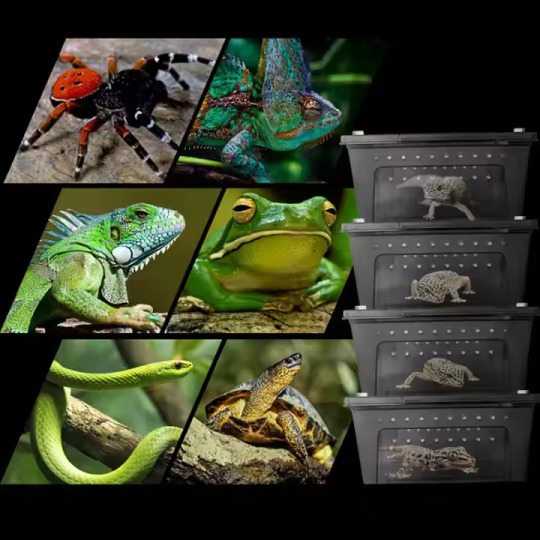#PinterestPets
Explore tagged Tumblr posts
Text
How to Make the Best DIY Hamster Cage at Home (Acrylic, Bin & Terrarium Options)
Build Your Own Hamster Cage: A Cozy DIY Habitat for Your Tiny Friend
Bringing home a hamster is exciting—until you start shopping for a cage and realize most of the hamster cages for sale just don’t cut it. They’re either too small, poorly ventilated, or oddly expensive for what you get. That’s exactly how I felt when I bought my first small hamster cage. My little fluffball looked cramped, bored, and honestly, kind of sad. That’s when I decided: why not build my own?
Turns out, creating a DIY hamster cage is not only totally doable—it’s also way more fun and customizable than you might expect.

Why Build Instead of Buy?
Sure, there are plenty of options labeled as the best hamster cages, but what works for one hamster might not be ideal for another. Some cages are hard to clean. Others lack space for burrowing or exploring. And if you’ve ever seen a bored hamster trying to chew its way to freedom, you know the struggle is real.
By building your own hamster house, you’re creating something tailor-made to your pet’s needs—spacious, well-ventilated, and full of fun. Plus, it can look great in your room. Think of it less as a “cage,” and more like designing a tiny, adorable home.
From Fish Tank to Hamster Mansion
My first DIY build started with a simple idea: why not repurpose an old aquarium? I had a 20-gallon tank collecting dust in the garage, and it suddenly clicked—this could be the perfect glass hamster cage.
Glass has so many benefits. It’s escape-proof, super easy to clean, and offers a clear view of your hamster’s daily adventures. With some mesh for the top and a few drilled holes for extra ventilation, I had created a simple but sleek hamster terrarium. I layered in bedding thick enough for tunneling, added a wooden hideout, a wheel, and a feeding station. My hamster moved in, and I swear—he instantly looked happier.

The Fun of Customizing Your Pet’s Habitat
What’s beautiful about building your own cage is the freedom to customize. Want a multi-level hamster habitat with bridges and tunnels? Done. Prefer a natural look using untreated wood and plexiglass panels? Totally possible.
I’ve seen people turn bookshelves into amazing hamster houses, complete with little ladders, secret tunnels, and viewing windows. Others use large plastic storage bins with mesh lids for a budget-friendly build—these work especially well as a small animal cage for beginners.
Want something modern and minimal? Try combining acrylic panels with a wooden frame. It’s like IKEA meets hamster paradise.

Not Just for Hamsters: A Versatile Setup for Small Pets
One thing I quickly realized is that these DIY enclosures are incredibly versatile. With slight modifications, your build can double as a:
Rat cage – Add stronger mesh and climbing platforms
Chameleon cage – Include vertical space and humidity control
Spider cage – Secure with fine mesh and safe locks
Many people I know keep multiple species of pets in custom-made setups that started as hamster cages. A flexible layout and solid ventilation make these cages ideal as a small pet cage for all kinds of creatures.
What You’ll Need (and What to Avoid)
Some basic tools and materials go a long way:
A base structure (aquarium, bin, bookshelf, or wood frame)
Mesh wire for ventilation
Zip ties, hinges, screws
Non-toxic sealant (especially if you’re using wood)
Plenty of bedding, chew toys, and hideouts
Avoid treated wood, sharp-edged mesh, and any glue or paint that could be toxic. Your pet’s safety is the top priority.
And yes—size matters! One common issue with commercial cages is they’re too small. A proper hamster cage should offer at least 450 square inches of uninterrupted floor space. That’s the bare minimum. Bigger is always better.

It’s Not Just a Cage—It’s a Home
When friends visit, they’re always surprised by my hamster’s setup. “Wait… did you build this?” Yes! And you can too. With a bit of effort, your DIY build might rival any “best hamster cages” on the market—and look way cooler in your home.
Watching your hamster explore tunnels you made, nap in a nook you crafted, or happily burrow into bedding you laid out… it’s deeply satisfying. It’s more than just a hamster habitat. It’s a reflection of your creativity and love for your pet.
If you’re feeling stuck between overpriced store-bought cages and the desire to give your hamster something better, I highly recommend going the DIY route. Whether you’re working with a glass hamster cage, an old bookshelf, or a plastic bin, the result can be something truly unique.
And if you ever get the DIY bug again—hey, why not build that dream rat cage, spider cage, or chameleon cage next?
#HamsterCage#BestHamsterCages#SmallPetCage#HamsterHouse#GlassHamsterCage#PetCare#HamsterLovers#SmallAnimalCage#PetAccessories#PinterestPets
0 notes